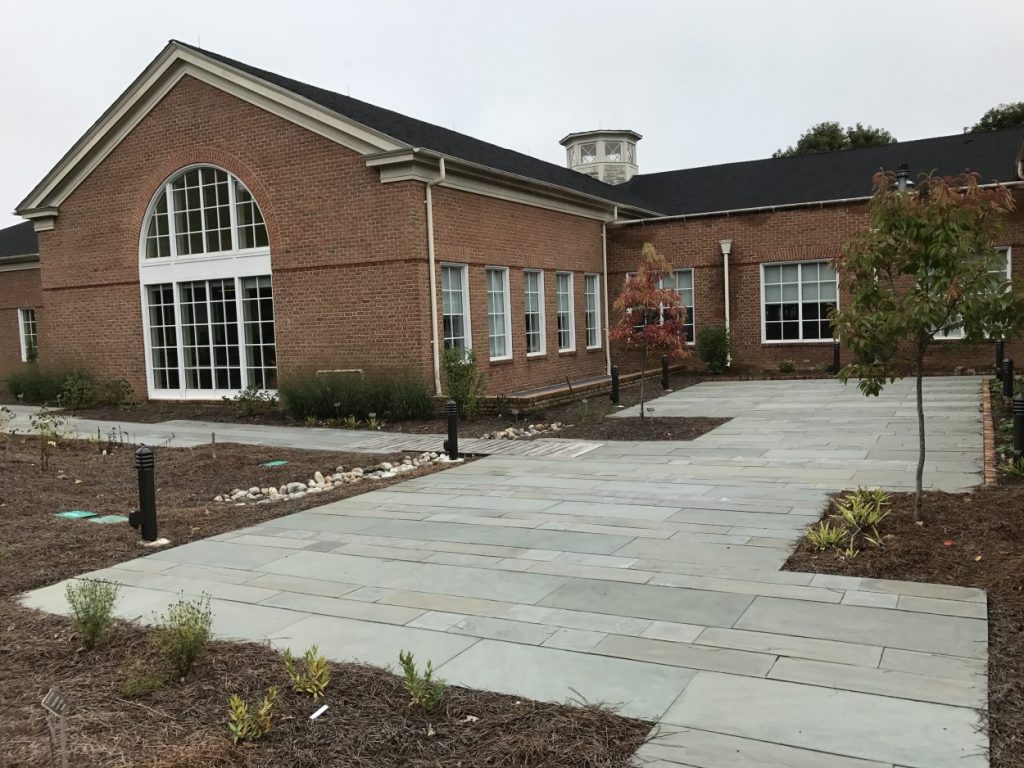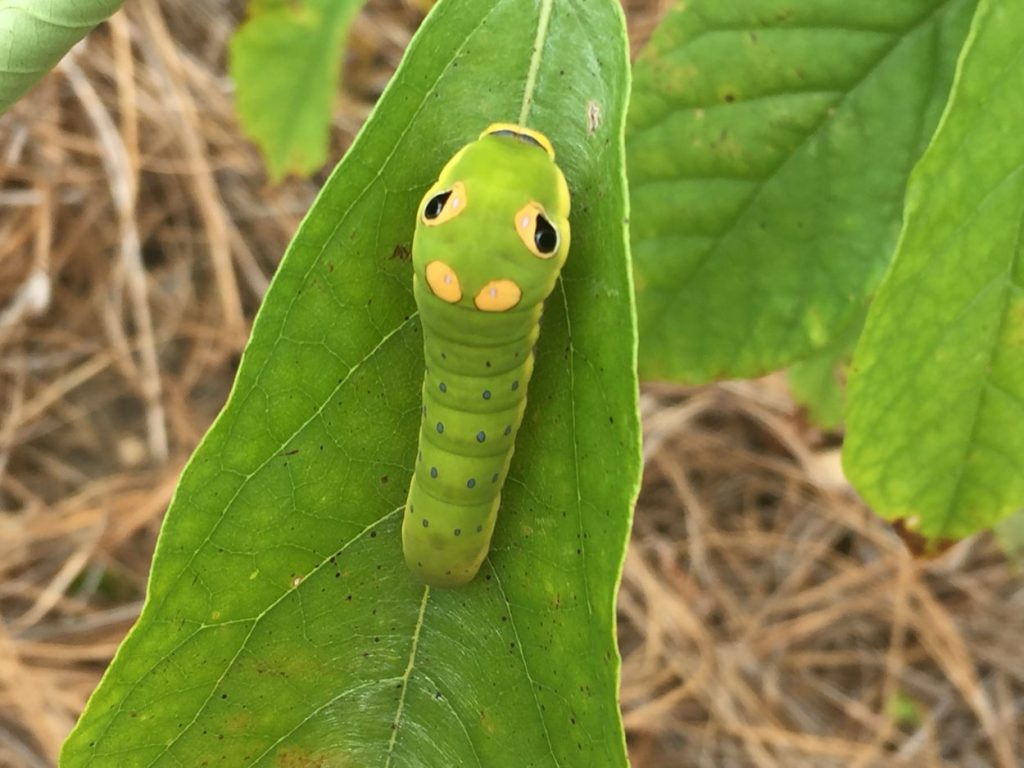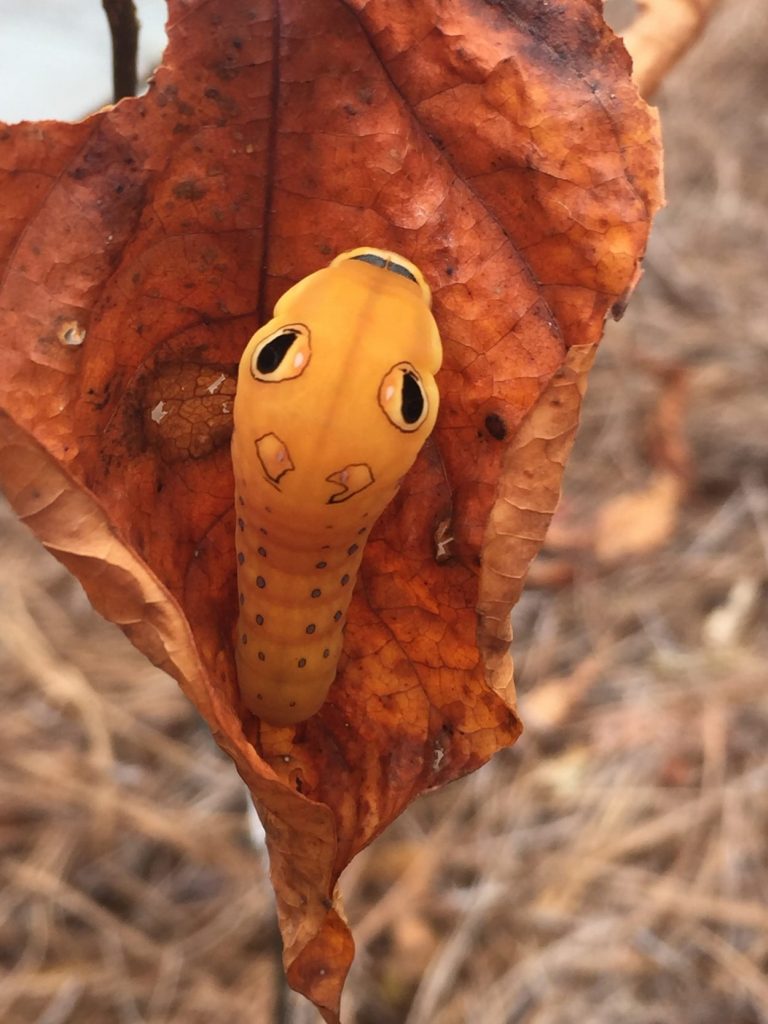Morton Native Plant Garden
First Look at the Marion Morton Native Plant Garden
If you peered out the window the last time you visited the Lora M. Robins Library, you may have noticed a new garden. Last year we were busy at work carefully filling the Marion Morton Native Plant Garden with the most beautiful, disease-resistant and interesting native plants we could find. On the west side of the Kelly Education Center you’ll see we’ve removed of 5,300 sq. ft. of turf to create a sanctuary of plants native to this area, Virginia specifically. We have also highlighted best practices you can recreate in your own home garden, including featuring drought-tolerant native plants, drip irrigation, and capturing rainwater to irrigate when needed.

The Morton Native Plant Garden in fall. The Garden is best viewed from inside the Lora Robins Library.
The Morton Native Plant Garden showcases the beauty and utility of native trees, understory shrubs and perennials. The Garden is perhaps best appreciated from the inside of the Library where it offers a picturesque view of sustainable residential-scale horticulture. It also is accessible on a limited basis to visitors via the Auditorium for facility rentals and as part of education classes. The plantings provide valuable habitat and food for insects and birds, encouraging a stronger local ecosystem. The design incorporates a new event terrace, creating a beautiful patio rental space. Even the hardscape showcases Virginia native materials and sustainability, from bluestone and granite pavers, to a black locust bridge made from reclaimed lumber.
In the Morton Native Plant Garden you’ll see a variety of colors, sizes and textures featured in a diverse array of specimen. The recent Winter Symposium and CVNLA Short Course gave us a chance to visit, accompanied by Director of Horticulture Grace Chapman Elton, the horticulturist for the area Dean Dietrich, and symposium speaker, research horticulturist George Coombs from Mt. Cuba Center. What an opportunity to get the inside scoop from the plant experts who know this garden the best, and a native plant expert to boot! But first, let’s talk a bit more about why we’ve chosen native plants for this garden.
Most importantly, native plants eliminate or greatly reduce the need for irrigation, excess fertilization and pesticides, while improving water quality by absorbing and filtering stormwater before it carries sediment and pollutants to streams and rivers. In addition, native plants support the local ecosystem as both food and habitat for insect/animal populations. Even in winter, you’ll find interest and beauty in this garden. Director of Horticulture Grace Chapman Elton shows off the three sourwood trees (Oxydendrum arboreum) featuring seed-heads, looking like tassels or pom-poms at the top of the tree. In fall, Elton says, the sourwoods have the most incredible red color on the leaves. Adjacent to the sourwoods is another favorite of Elton’s: the American hop hornbeam (Ostrya virginiana), which in spring, features blooms that look like the hops you use for beer-making.
As we mentioned, with the native flora come a diverse ecosystem with the matching fauna. As an example, horticulturist Dean Dietrich says mentions the spice bush (Lindera benzoin) was filled with spicebush swallowtail butterfly caterpillars and larva this summer and fall. Another advantage of having natives here at the botanical garden is that they are protected from natural “predators.” In particular, Dietrich mentions the eastern wahoo (Euonymus americanus), which grows native in Virginia woods, but is difficult to find, since it’s also a favorite of deer. And did you know that Virginia has native blueberries? I didn’t! You’ll find some great examples like highbush blueberry (Vaccinium corymbosum) ‘Toro’ and ‘Blue Gold’ and dwarf blueberry (Vaccinium) ‘Top Hat.’
Dietrich says a few other highlights to look for this spring include common ninebark; Physocarpus opulifolius ‘Jefam’ Amber Jubilee®, arrowwood viburnum, (Viburnum dentatum) ‘Christom’ Blue Muffin®. In summer look for a nice selection of coreopsis including threadleaf coreopsis; Coreopsis verticillata ‘Broad Street’ Cruizin™, large-flowered Tickseed; Coreopsis grandiflora ‘Domino’, Coreopsis ‘Zagreb’ and Coreopsis auriculata ‘Nana.’
You can see some of the plant selections on the schematic drawing below, or you can see the full plant list (PDF).
Strong Performing Natives
So let’s come back to the natives. Horticulturist and native plant expert George Coombs, has a few favorites to share with you — some great natives that you may want to consider for your home garden. Coombs explained he is in the midst of an extensive Phlox paniculata trial, with a clear stand-out, at least when it comes to attracting pollinators. Phlox paniculata ‘Jeana’, is a pink-bloomed perennial that is a “good performer in the garden, that’s just first and foremost, but it also attracts 10 times more butterflies than any other cultivar, and we have almost 100 types of Phlox paniculata, so that’s pretty impressive to see one that is that much more preferred.”
And since powdery mildew is always a challenge with Monarda, we’ll take his suggestion and add some more Monarda ‘Claire Grace’ to our collection. Currently you can see this beauty in the Anderson Meadow. Coombs says ‘Claire Grace’ has a better habit, better disease resistance and glossier leaves.
The Marion Morton Native Plant Garden is made possible through a bequest from the estate of Marion N.W. Morton, a grant from the Windsor Foundation and a gift from a private donor.
Editor’s Note: Lynn Kirk contributed to this article.


